I hope that you were able to read my blog post about the American Eighth Air Force’s first raid on the ball bearing factories at Schweinfurt. This brave action took place on August 17th 1943, and was a catastrophe. As I wrote a few weeks ago…
“The raid caused a 34 per cent loss of production at Schweinfurt but this was soon made up for by surplus supplies from all over Germany The industry’s infrastructure, while vulnerable to a sustained campaign, was not vulnerable to destruction by a single raid.”
I quoted the casualty figures…
“230 bombers had taken part, and sixty of these were destroyed. Five hundred and fifty two men were killed in the air, and seven poor souls made it back home, but, alas, had already succumbed to their injuries. Twenty one men were badly wounded. Beyond the sixty B-17s shot down, between 55-95 further aircraft were badly damaged. Of these many were too severely damaged ever to be repaired.”
Despite these huge losses, the Eighth Air Force plan had always been to go back to Schweinfurt a second time. It was to take the best part of two months to rebuild their forces, but on October 14th 1943, the B-17s returned to attack the factories where, at the time, American wartime intelligence thought ball bearing production had been permanently reduced by up to a third.
This time, changes would be made. Instead of a two-pronged attack on the ball-bearing works at Schweinfurt and the Messerschmitt aircraft works at Regensburg, the entire force would attack Schweinfurt alone.
Secondly, additional fighter escorts were added to protect the vulnerable bombers as much as was possible during both the outward and return journeys of the operation. Each of the three bomber wings, therefore, was to be escorted by multiple squadrons of P-47 Thunderbolts. For an unknown reason, though, none of the P-47s were equipped with drop tanks, an important mistake which significantly limited their escort range. And one outfit of fighters previously allocated to the Flying Fortresses was given the job of acting as an escort to the 29 B-24 Liberator bombers on a diversionary mission to Emden.
At first, though, things went quite well. When the bombers were initially intercepted as they crossed the coast the P-47s succeeded in shooting down seven Bf 109s. But over the Netherlands the P-47s came to the end of their range and the B17s were left alone and virtually defenceless. Large numbers of Focke-Wulf FW 190s and Messerschmitt Bf 109s made repeated attacks exactly as they had done in August. The 305th Bomb Group lost 13 of its 16 B-17s in just a few minutes. Further into Germany, this second Schweinfurt Raid would soon follow the same pattern as the first one.
As well as single engined fighters, twin engined Messerschmitt Bf110s and Junkers Ju88s were encountered. They carried much heavier cannon.
This time, many more aircraft were armed with Werfer-Granate 21 rocket launchers, firing unguided stand-off rockets.
Here are two wonderful pictures from the Life Magazine of the day, showing the heroic efforts of the brave young Eighth Air Force gunners.
As in August, although the ball-bearing factories were badly hit, the mission did not achieve any long lasting effects. Ball bearing production was halted for around six weeks but these losses were again easily made up by the large stocks the Germans already had. After this second attack, all of the ball bearing facilities were dispersed from Schweinfurt across the whole of Germany to reduce the risk of their being bombed for a third time.
General “Hap” Arnold claimed that “Black Thursday” and its losses were just incidental, but daylight bomber raids deep into Germany without fighter escort were suspended until further notice. Cynics might well have asked just how many B-17s did the Eighth Air Force have left on strength anyway?
Long distance bombing raids would only recommence in February 1944 with the advent of Operation Argument, a series of missions later to be called the “Big Week”. By then, escorts were available in the form of P-51B Mustangs.
Arnold’s “incidental losses” on the second Schweinfurt raid were astounding. Of the 291 B-17s on the mission, 60 were shot down over enemy territory.
Another 17 bombers were damaged so heavily that they had to be scrapped. A further 121 B-17s were damaged to a greater or lesser extent and many of the crippled bombers would require a great deal of time and effort to repair them.
These B-17 losses represented more than 26% of the attacking force. The losses of aircrew were equally devastating, with 650 men killed out of 2,900, some 22% of the bomber crews. Certain units were hugely affected. The 306th Bomb Group lost 100 men, with 35 either killed in the air or died of wounds and 65 made Prisoners of War. The 305th Bomb Group lost 130 men with 36 killed outright. This constituted 87% of their complement.
My own father, Fred, even if he seems never to have had a great deal of contact with the Americans of the Eighth Air Force, always had enormous respect for their almost unbelievable bravery. Some thirty years after the war, as I returned from university, Fred was to accompany me, one dull autumn day, on a visit to the American Cemetery at Madingley near Cambridge.
How strange to think that these neatly kept graves may well have been the last resting place of some of the brave young airmen he had watched flying high above him in the frosty blue sky of East Anglia so many years previously.
If your navigational skills are up to it, this is Part One of a ten film series about the Schweinfurt raid.
In another blog post, I will look at what the Eighth Air Force did after the two disastrous raids on Schweinfurt, and how their airmen’s lives were saved, and arguably the Second World War was won, thanks to Ronnie Harker, a New Zealander who at the time was working at Hucknall in Nottinghamshire, just six miles to the north west of where I am sitting right now as I write the conclusion to this post.

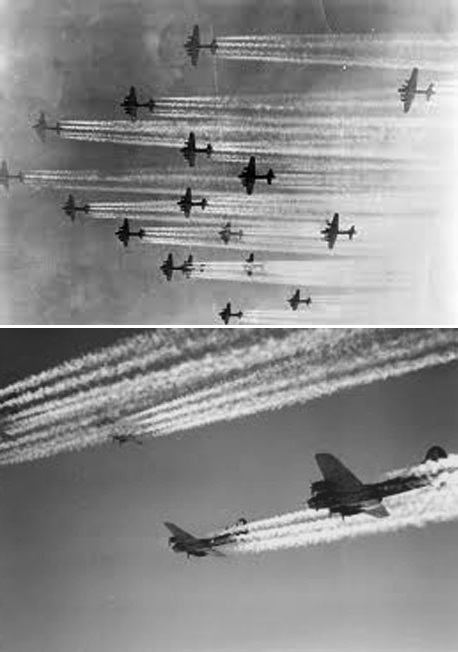
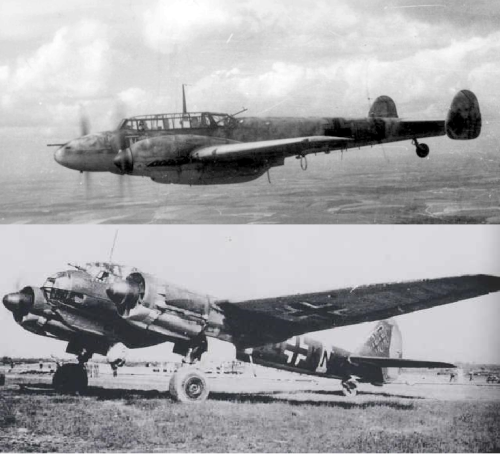
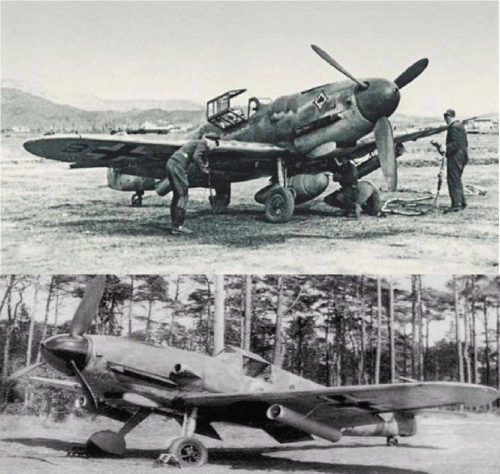
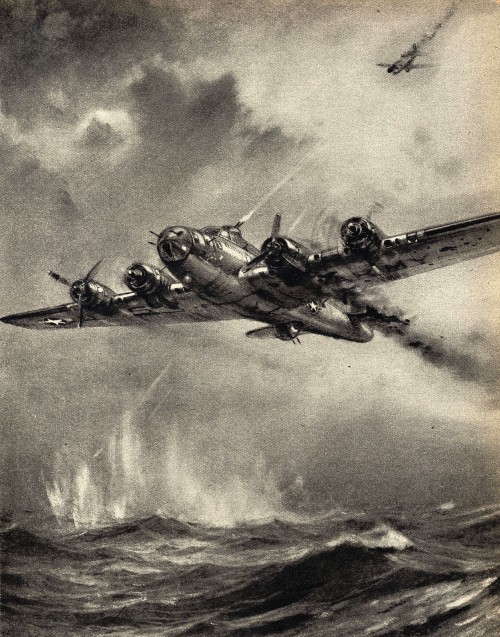
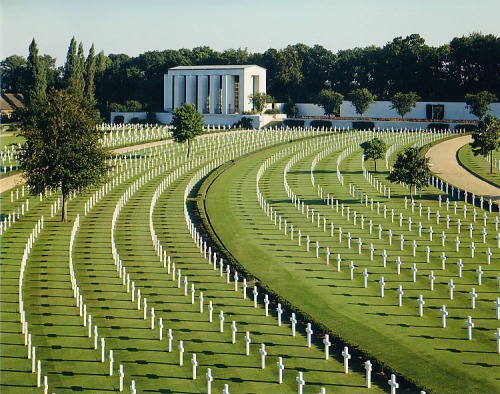



One can never write or read enough about the 8th. They were a remarkable bunch of men in their flying machines!! You have a great collection of photos here, John. This page alone is more than I learned in school!!
Thank very much for your kind words. As far as I know, here in England we don’t do a great deal about the RAF or the Eighth Air Force in current history classes. On the other hand we do make sure that kids all know that neither Uncle Adolf nor the Final Solution were good things, so at least we are getting some things right!
Excellent accounting of the effort and sacrifice, sir.
The B-17 was heralded as the face of the US air campaign against Nazi Germany; what most people don’t realize is that the B-24 carried a higher payload. BTW, “Picadilly Lily”, the B-17 used in ” Twelve O’Clock High” is nearby me and in the process of being restored (but not to flying condition).
These boys faced a grim future in the early days of unescorted daylight bombing as you so well illustrate. Not only were they exposed to sub-freezing temperatures in the interior exposed to the elements in high altitude bombing, spent brass .50 caliber casings would roll around and pile up on the floor as they shot. Of all the US armed forces, the USAAF had the highest death count at over 250,000.
Thank you so much. “Twelve O’Clock High” is a wonderful film and I hope that they manage to get the aircraft restored. I’m afraid that our record over here in Great Britain is fairly shameful as regards preserving the past. Just one Lancaster and no Halifaxes, Stirlings or Wellingtons. And there are so many people nowadays who would love to know about their fathers and grandfathers and what they did during the war. Best wishes for a lovely holiday!
Reblogged this on Lest We Forget and commented:
Part two… I had reblogged part one.
It took a lot of courage to get back into a plane mission after mission when losses were so heavy..
Yes, it certainly did. As far as I am aware, the Eighth Air Force allowed men to stop flying if they wanted to. For me, that makes it even braver! In RAF Bomber Command, despite the fact that every single member was a volunteer, nobody was allowed to quit. Strangely enough, the percentages of those who couldn’t carry on seems to have been just about the same in both air forces.
That is very interesting.
Thanks very much for your kind words.
There is a WEBSite titled “B-17 Bomber Flying Fortress – The Queen Of The Skies Database” Oddly enough it’s a German site. It contains information on ALL manufactured B-17 aircraft using tail numbers to identify them. The information consists of Group and Squadron organization, flight crewmembers, and the fate of aircraft and crew. It uses the official USAAF Missing Crew Reports and other documented sources.
According to this database, the following losses wer4e incurred by the USAAF on the Second Schweinfurt Mission on 14 Oct 1943
57 B-17s went down over enemy occupied territory
1 B-17 landed in Switzerland
1 B-17 ditched in the North Sea
9 B-17s crashed or crash landed in England on their return
37 B-17s aborted the mission and never crossed the Channel
158 personnel were KIA with an addition 5 KIA returning
381 personnel were POW with 2 dying in prison camps
35 personnel successfully evaded capture and returned to units
7 personnel were interned in Switzerland
Only one crewmember died in the crashlandings, the rest returned to duty. The database names each and every crewmember, and even has some extra notes on some of these brave individuals.
You might wish to check out this interesting database.
Thanks very much for this information about what appears to be a very valuable website. I will certainly give it a look!